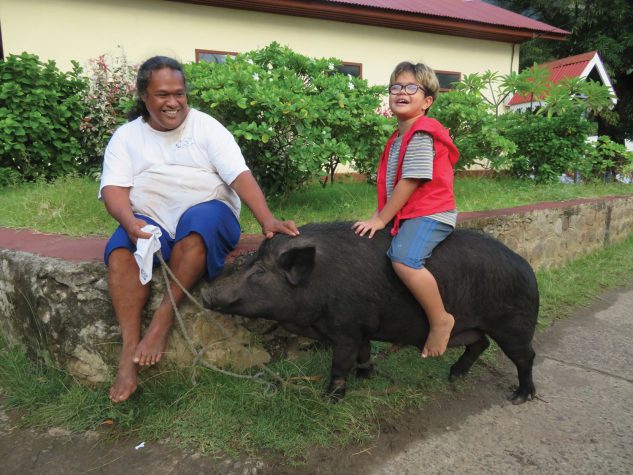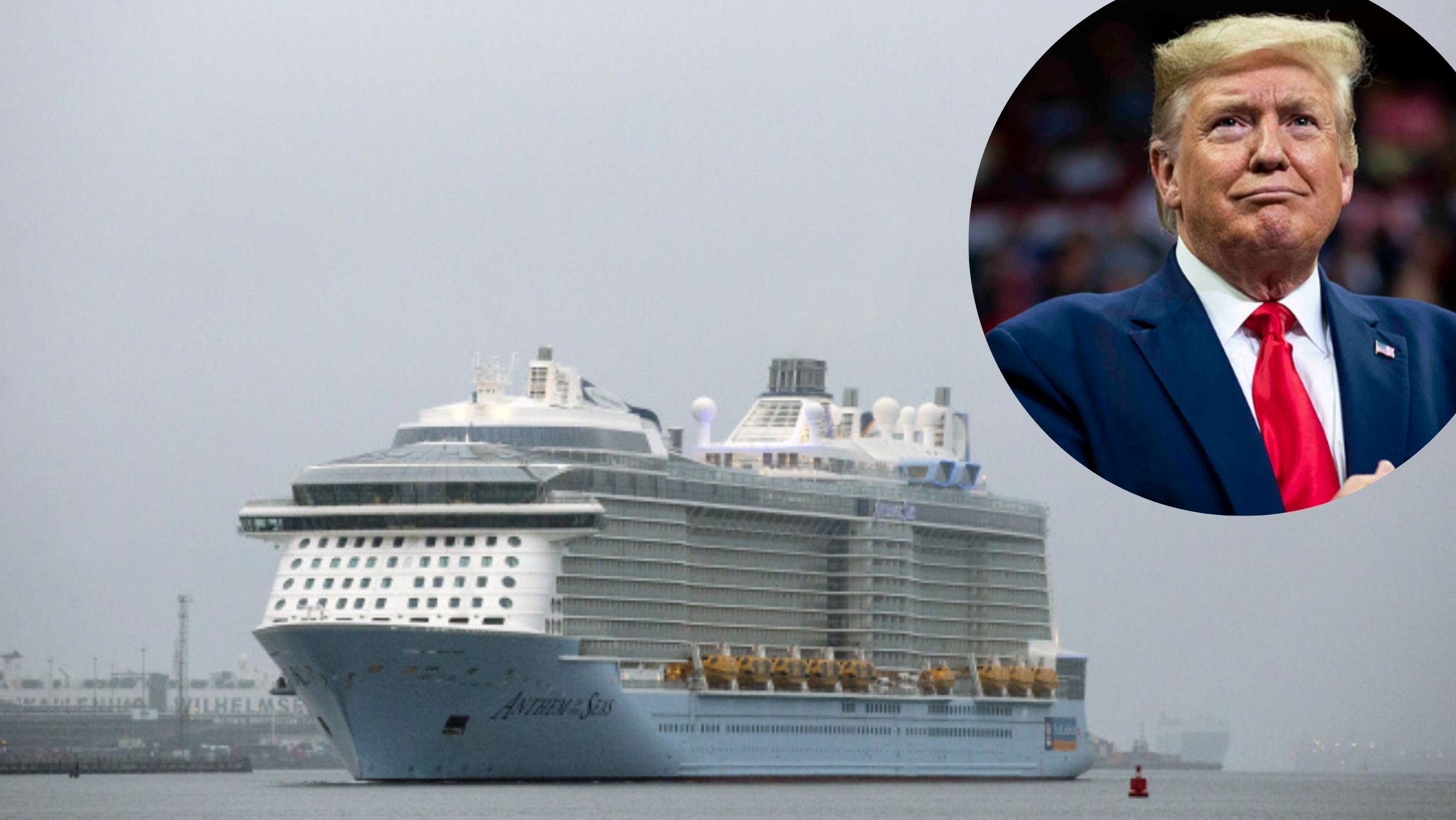As we stroll through the main street on Tahuata a man walks past with a large black pig on a leash as if it’s the most natural thing in the world. He breaks into a warm gap-toothed smile when we ask if it’s OK to take photos and poses with his splendid porker. We decide not to spoil the moment by inquiring if it is a pet or destined for a pot.

Another afternoon we see a man wobble past on a rusty bicycle with a couple of fragrant freshly-baked French baguettes tucked under his arm. These are just two of the wonderful snapshots of daily life on the Marquesas Islands.
The 12 French Polynesian islands – only six of them inhabited and with a total population of fewer than 9,500 – are scattered in the South Pacific 1,500 kilometres from Tahiti, making the archipelago one of the most isolated on the globe.
Throughout the year just two ships sail back and forth from the Tahitian capital of Papeete to provide the inhabitants with a vital lifeline. One is a dedicated cargo vessel and I am aboard the other; Aranui 5.
Totally unlike any other ship you’ve seen, it’s a combination of a freighter and 254-passenger cruise ship. Indeed, it looks as if it could have been created from two vessels that have been dissected and stuck together in the middle.
Aranui 5 mostly sails at night in order to maximise daylight hours to deliver the cargo. This means there is plenty of time for us to explore each destination and meet the islanders, as the ship often moors for the whole day.
What adds to the allure of the Marquesas is that each island is different, and they even have their own dialects. At each destination, a fleet of all-terrain vehicles, driven by multi-tasking and ever-smiling townsfolk, arrives to collect us and take us to towns, villages, museums, archaeological sites and gardens, chatting about their lives on the way. On Ua Huka we meet Hina, the local postmistress, who welcomes us with a necklace made from colourful seeds before driving us around, telling us how much she misses her son, who is a soldier in Germany.
First settled by seafaring Polynesians as early as 300AD, the archipelago was ‘discovered’ and named by Spanish navigator Álvaro de Mendaña in 1595. But he didn’t hang around for long when confronted by tattooed and war-painted tribes who were partial to cannibalising their enemies.
European Christian missionaries returned to instil ‘civilisation’, bringing with them devastating diseases, and in 1884 they banned the symbolic tatus in the very place the body art originated. Today, bold black tattoos in striking geometric patterns or intricate designs and often depicting the turtle, an important creature in Polynesian culture, adorn virtually every islander and Aranui crewmember. Our guide explains that the inkings were once ‘earned’ at various stages of tribal life; today they remain deeply significant and personal, charting ancestors, family, career and personality.
As well as the pig, we encounter other four-legged inhabitants on Ua Huka. With coats glistening under the afternoon sun, a small herd of wild horses graze on grassland on the shore, the windfall from nearby mango trees providing a sweet treat to supplement their diet. We learn the wiry animals are direct descendants of horses transported from Chile to Ua Huka in 1856 and they now outnumber the human inhabitants. Walking back to the ship we meet a group of children playing marbles on the quayside and they pause to wave at us. Not one of them has a mobile phone or games console.
Back on board I speak to captain Christophe Dupuy. The Frenchman has previously worked on both passenger and cargo ships, which makes him ideal for juggling the varying needs of his human consignment and up to 1,700 tonnes of inanimate freight.
“Think of everything you would find in a grocery store and more and we deliver it,” he explains. “We carry the post, cars, bicycles, small boats, fresh, canned and frozen items – including lots of ice cream as the islanders love it. On this sailing we’ve got concrete, wood and other materials to build 12 village houses. We also take goods back to Tahiti from the islands such as copra, a dried coconut product and valued for the oil that is extracted from it for livestock feed.
“Horses, pig and goats are transported within the islands, but the most unusual thing I’ve ever carried is bees. They had to be kept in hives on the open deck and some of them buzzed around a bit, but they didn’t cause any bother and to the best of my knowledge none of them flew away before we delivered them!”
As the brawny cargo-handlers get to work I wonder what we’re going to see in our next port of call on this fascinating and unique voyage.
BOOKINGS: Aranui 5 sails year-round12-night cruises from Tahiti to the Marquesas Islands. Cruise-only fares start from AUD $6,536 for a twin-share cabin. aranuicruises.com.au







